Tb causes and prevention. Comprehensive Guide on Tuberculosis: Symptoms, Causes, Treatment, and Prevention
What is tuberculosis? What are the symptoms of tuberculosis? What causes tuberculosis? How is tuberculosis treated? How can tuberculosis be prevented? Get answers to these questions and more in this comprehensive guide.
Understanding Tuberculosis
Tuberculosis (TB) is a highly contagious infectious disease that primarily affects the lungs, although it can also spread to other parts of the body. It is caused by a bacterium called Mycobacterium tuberculosis. TB was once a leading cause of death in the United States, but due to advancements in treatment and prevention, most cases can now be cured with antibiotics.
Types of Tuberculosis
There are two forms of TB: latent TB and active TB. Latent TB means you have the TB bacteria in your body, but your immune system is keeping it from spreading and you have no symptoms. Active TB occurs when the bacteria multiply and cause you to become sick, with symptoms like coughing, chest pain, and fever. People with latent TB can develop active TB in the future if their immune system becomes weakened.

Tuberculosis Symptoms
The main symptoms of active tuberculosis include:
- A cough that lasts more than 3 weeks
- Chest pain
- Coughing up blood
- Feeling tired all the time
- Night sweats
- Chills
- Fever
- Loss of appetite
- Weight loss
If you experience any of these symptoms, it’s important to see a doctor right away to get tested for TB.
Causes and Risk Factors of Tuberculosis
Tuberculosis is caused by the Mycobacterium tuberculosis bacteria, which spread through the air when someone with active TB coughs, sneezes, talks, laughs, or sings. You can only get TB by coming into contact with someone who has the active disease.
Certain factors can increase your risk of developing TB, including:
- Having a weakened immune system (e.g., from HIV/AIDS, diabetes, cancer treatments)
- Being a healthcare worker or living/working in a high-risk setting like a hospital or prison
- Traveling to or living in areas where TB is common, such as parts of Asia, Africa, Eastern Europe, and Latin America
- Being a smoker
- Being a baby or young child, as their immune systems are not fully developed
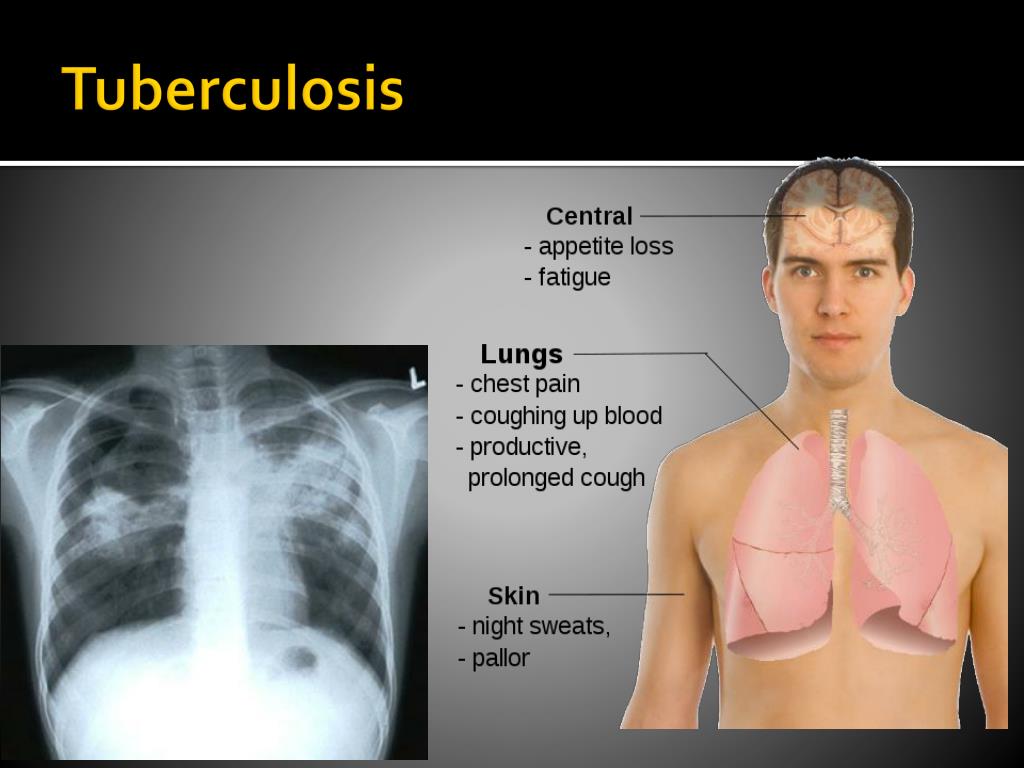
Diagnosing Tuberculosis
There are two main tests used to diagnose tuberculosis:
- Skin test (also called the Mantoux tuberculin skin test): A small amount of fluid is injected into the skin of the forearm, and the area is checked for swelling after 2-3 days.
- Blood test (also called interferon-gamma release assay or IGRA): These tests measure the immune system’s response to TB proteins in a sample of your blood.
If either of these tests is positive, your doctor will then use chest X-rays or CT scans, as well as sputum tests, to determine if you have latent or active TB.
Treating Tuberculosis
Tuberculosis is typically treated with a combination of antibiotics taken for at least 6-9 months. The specific medications used will depend on whether you have latent or active TB, as well as whether the bacteria are drug-resistant.
For latent TB, you may only need to take one or two medications to prevent the infection from becoming active. For active TB, you’ll likely need to take a combination of 4 or more antibiotics at first, with the number and type of drugs reduced over time as you respond to treatment.
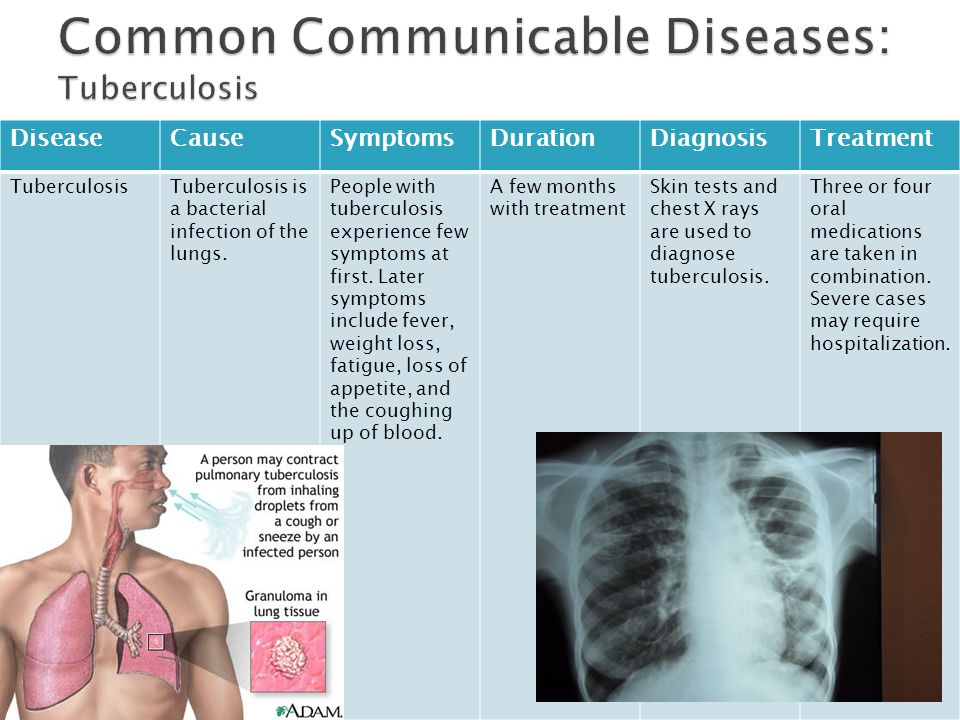
It’s important to take all of your TB medications as prescribed, even if you start to feel better, in order to completely eradicate the bacteria and prevent the development of drug-resistant strains.
Preventing Tuberculosis
There are several ways to help prevent the spread of tuberculosis:
- Early diagnosis and treatment of active TB cases
- Providing preventive therapy for those with latent TB to stop it from becoming active
- Improving living conditions and nutrition to boost immune systems
- Implementing infection control measures in healthcare settings
- Developing and administering effective vaccines, like the BCG vaccine
While TB remains a major global health problem, the good news is that it is largely curable and preventable with proper awareness, testing, and treatment. By understanding the causes, symptoms, and prevention strategies, we can work to eliminate this infectious disease.
Symptoms, Causes, Treatment, and Prevention
Written by WebMD Editorial Contributors
- What Is Tuberculosis?
- Tuberculosis Types
- Tuberculosis Signs and Symptoms
- Tuberculosis Causes
- Tuberculosis Risk Factors
- Tuberculosis Transmission
- Tuberculosis Tests and Diagnosis
- Tuberculosis Treatment
- Tuberculosis Medication Side Effects
- Tuberculosis Complications
- Tuberculosis Prevention
- Tuberculosis Outlook
- More
Tuberculosis (TB) is a contagious infection that usually attacks your lungs. It can also spread to other parts of your body, like your brain and spine. A type of bacteria called Mycobacterium tuberculosis causes it.
Can tuberculosis be cured?
In the 20th century, TB was a leading cause of death in the United States. Today, most cases are cured with antibiotics. But it takes a long time. You have to take medications for at least 6 to 9 months.
A TB infection doesn’t always mean you’ll get sick. There are two forms of the disease:
- Latent TB. You have the germs in your body, but your immune system keeps them from spreading. You don’t have any symptoms, and you’re not contagious. But the infection is still alive and can one day become active. If you’re at high risk for re-activation — for instance, if you have HIV, you had an infection in the past 2 years, your chest X-ray is unusual, or your immune system is weakened — your doctor will give you medications to prevent active TB.
- Active TB. The germs multiply and make you sick. You can spread the disease to others. Ninety percent of active cases in adults come from a latent TB infection.
A latent or active TB infection can also be drug-resistant, meaning certain medications don’t work against the bacteria.
Latent TB doesn’t have symptoms. A skin or blood test can tell if you have it.
Signs of active TB disease include:
- A cough that lasts more than 3 weeks
- Chest pain
- Coughing up blood
- Feeling tired all the time
- Night sweats
- Chills
- Fever
- Loss of appetite
- Weight loss
If you have any of these symptoms, see your doctor to get tested. Get medical help right away if you have chest pain.
Tuberculosis is caused by bacteria that spread through the air, just like a cold or the flu. You can get TB only if you come into contact with people who have it.
You could be more likely to get TB if:
- A friend, co-worker, or family member has active TB.
- You live in or have traveled to an area where TB is common, like Russia, Africa, Eastern Europe, Asia, Latin America, and the Caribbean.
- You’re part of a group in which TB is more likely to spread, or you work or live with someone who is. This includes homeless people, people who have HIV, people in jail or prison, and people who inject drugs into their veins.

- You work or live in a hospital or nursing home.
- You’re a health care worker for patients at high risk of TB.
- You’re a smoker.
A healthy immune system fights the TB bacteria. But you might not be able to fend off active TB disease if you have:
- HIV or AIDS
- Diabetes
- Severe kidney disease
- Head and neck cancers
- Cancer treatments such as chemotherapy
- Low body weight and poor nutrition
- Medications for organ transplants
- Certain drugs to treat rheumatoid arthritis, Crohn’s disease, and psoriasis
Babies and young children also have higher chances of getting it because their immune systems aren’t fully formed.
When someone who has TB coughs, sneezes, talks, laughs, or sings, they release tiny droplets that contain the germs. If you breathe in these germs, you can get it.
TB isn’t easy to catch. You usually have to spend a long time around someone who has a lot of the bacteria in their lungs. You’re most likely to catch it from co-workers, friends, and family members.
You’re most likely to catch it from co-workers, friends, and family members.
Tuberculosis germs don’t thrive on surfaces. You can’t get it from shaking hands with someone who has it or by sharing their food or drink.
There are two common tests for tuberculosis:
- Skin test. This is also known as the Mantoux tuberculin skin test. A technician injects a small amount of fluid into the skin of your lower arm. After 2 or 3 days, they’ll check for swelling in your arm. If your results are positive, you probably have TB bacteria. But you could also get a false positive. If you’ve gotten a tuberculosis vaccine called bacillus Calmette-Guerin (BCG), the test could say that you have TB when you really don’t. The results can also be false negative, saying that you don’t have TB when you really do, if you have a very new infection. You might get this test more than once.
- Blood test. These tests, also called interferon-gamma release assays (IGRAs), measure the response when TB proteins are mixed with a small amount of your blood.

Those tests don’t tell you if your infection is latent or active. If you get a positive skin or blood test, your doctor will learn which type you have with:
- A chest X-ray or CT scan to look for changes in your lungs
- Acid-fast bacillus (AFB) tests for TB bacteria in your sputum, the mucus that comes up when you cough
Your treatment will depend on your infection.
- If you have latent TB, your doctor will give you medication to kill the bacteria so the infection doesn’t become active. You might get isoniazid, rifapentine, or rifampin, either alone or combined. You’ll have to take the drugs for up to 9 months. If you see any signs of active TB, call your doctor right away.
- A combination of medicines also treats active TB. The most common are ethambutol, isoniazid, pyrazinamide, and rifampin. You’ll take them for 6 to 12 months.
- If you have drug-resistant TB, your doctor might give you one or more different medicines.
 You may have to take them for much longer, up to 30 months, and they can cause more side effects.
You may have to take them for much longer, up to 30 months, and they can cause more side effects.
Whatever kind of infection you have, it’s important to finish taking all of your medications, even when you feel better. If you quit too soon, the bacteria can become resistant to the drugs.
Like any medication, TB drugs can have side effects. Common isoniazid side effects include:
- Numbness and tingling in your hands and feet
- Upset stomach, nausea, and vomiting
- Loss of appetite
- Weakness
Ethambutol side effects may include:
- Chills
- Painful or swollen joints
- Belly pain, nausea, and vomiting
- Loss of appetite
- Headache
- Confusion
Some pyrazinamide side effects include:
- Lack of energy
- Nausea and vomiting
- Loss of appetite
- Muscle or joint pain
Common rifampin side effects include:
- Skin rash
- Upset stomach, nausea, and vomiting
- Diarrhea
- Loss of appetite
- Inflamed pancreas
Tuberculosis infection can cause complications such as:
- Joint damage
- Lung damage
- Infection or damage of your bones, spinal cord, brain, or lymph nodes
- Liver or kidney problems
- Inflammation of the tissues around your heart
To help stop the spread of TB:
- If you have a latent infection, take all of your medication so it doesn’t become active and contagious.

- If you have active TB, limit your contact with other people. Cover your mouth when you laugh, sneeze, or cough. Wear a surgical mask when you’re around other people during the first weeks of treatment.
- If you’re traveling to a place where TB is common, avoid spending a lot of time in crowded places with sick people.
Tuberculosis vaccine
Children in countries where TB is common often get the BCG vaccine. It isn’t widely used in the United States, and it doesn’t always protect against infection. Doctors recommend it only for children living with someone who has an active TB infection with a very drug-resistant strain or who can’t take antibiotics.
Other vaccines are being developed and tested.
Your outlook depends on several things, including your overall health, how severe the infection is, and how well you follow your doctor’s directions on treatment. In the United States, experts estimate that treatment works in more than 95% of cases.
Top Picks
Symptoms, Causes, Treatment, and Prevention
Written by WebMD Editorial Contributors
- What Is Tuberculosis?
- Tuberculosis Types
- Tuberculosis Signs and Symptoms
- Tuberculosis Causes
- Tuberculosis Risk Factors
- Tuberculosis Transmission
- Tuberculosis Tests and Diagnosis
- Tuberculosis Treatment
- Tuberculosis Medication Side Effects
- Tuberculosis Complications
- Tuberculosis Prevention
- Tuberculosis Outlook
- More
Tuberculosis (TB) is a contagious infection that usually attacks your lungs. It can also spread to other parts of your body, like your brain and spine. A type of bacteria called Mycobacterium tuberculosis causes it.
It can also spread to other parts of your body, like your brain and spine. A type of bacteria called Mycobacterium tuberculosis causes it.
Can tuberculosis be cured?
In the 20th century, TB was a leading cause of death in the United States. Today, most cases are cured with antibiotics. But it takes a long time. You have to take medications for at least 6 to 9 months.
A TB infection doesn’t always mean you’ll get sick. There are two forms of the disease:
- Latent TB. You have the germs in your body, but your immune system keeps them from spreading. You don’t have any symptoms, and you’re not contagious. But the infection is still alive and can one day become active. If you’re at high risk for re-activation — for instance, if you have HIV, you had an infection in the past 2 years, your chest X-ray is unusual, or your immune system is weakened — your doctor will give you medications to prevent active TB.
- Active TB.
 The germs multiply and make you sick. You can spread the disease to others. Ninety percent of active cases in adults come from a latent TB infection.
The germs multiply and make you sick. You can spread the disease to others. Ninety percent of active cases in adults come from a latent TB infection.
A latent or active TB infection can also be drug-resistant, meaning certain medications don’t work against the bacteria.
Latent TB doesn’t have symptoms. A skin or blood test can tell if you have it.
Signs of active TB disease include:
- A cough that lasts more than 3 weeks
- Chest pain
- Coughing up blood
- Feeling tired all the time
- Night sweats
- Chills
- Fever
- Loss of appetite
- Weight loss
If you have any of these symptoms, see your doctor to get tested. Get medical help right away if you have chest pain.
Tuberculosis is caused by bacteria that spread through the air, just like a cold or the flu. You can get TB only if you come into contact with people who have it.
You could be more likely to get TB if:
- A friend, co-worker, or family member has active TB.

- You live in or have traveled to an area where TB is common, like Russia, Africa, Eastern Europe, Asia, Latin America, and the Caribbean.
- You’re part of a group in which TB is more likely to spread, or you work or live with someone who is. This includes homeless people, people who have HIV, people in jail or prison, and people who inject drugs into their veins.
- You work or live in a hospital or nursing home.
- You’re a health care worker for patients at high risk of TB.
- You’re a smoker.
A healthy immune system fights the TB bacteria. But you might not be able to fend off active TB disease if you have:
- HIV or AIDS
- Diabetes
- Severe kidney disease
- Head and neck cancers
- Cancer treatments such as chemotherapy
- Low body weight and poor nutrition
- Medications for organ transplants
- Certain drugs to treat rheumatoid arthritis, Crohn’s disease, and psoriasis
Babies and young children also have higher chances of getting it because their immune systems aren’t fully formed.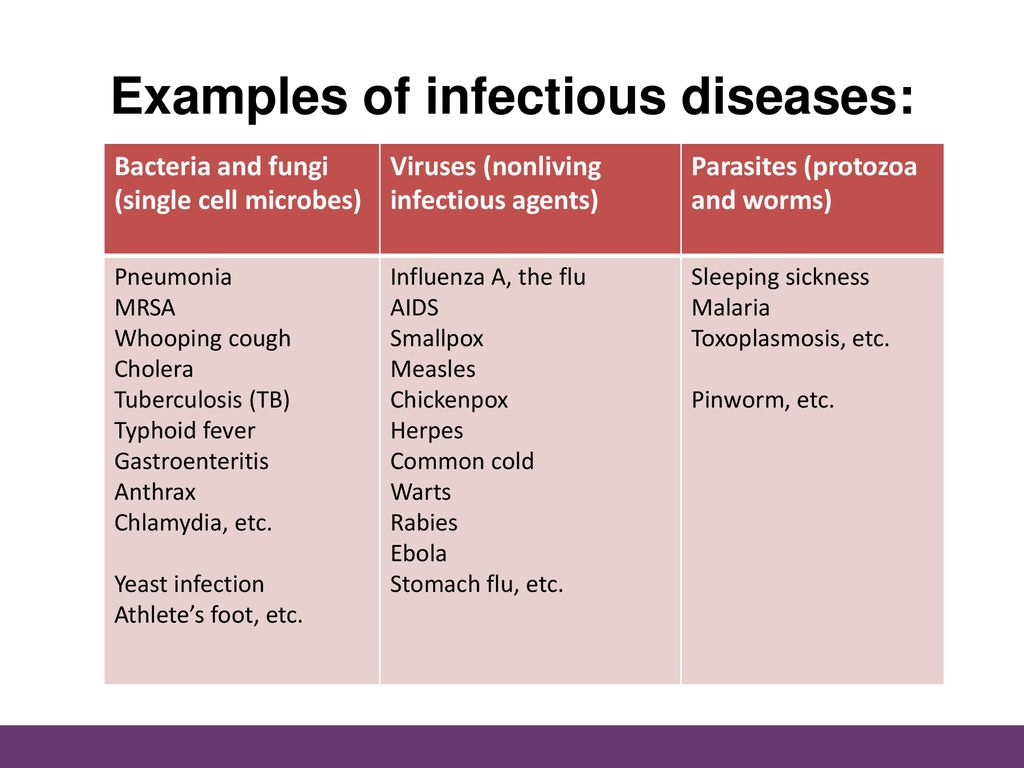
When someone who has TB coughs, sneezes, talks, laughs, or sings, they release tiny droplets that contain the germs. If you breathe in these germs, you can get it.
TB isn’t easy to catch. You usually have to spend a long time around someone who has a lot of the bacteria in their lungs. You’re most likely to catch it from co-workers, friends, and family members.
Tuberculosis germs don’t thrive on surfaces. You can’t get it from shaking hands with someone who has it or by sharing their food or drink.
There are two common tests for tuberculosis:
- Skin test. This is also known as the Mantoux tuberculin skin test. A technician injects a small amount of fluid into the skin of your lower arm. After 2 or 3 days, they’ll check for swelling in your arm. If your results are positive, you probably have TB bacteria. But you could also get a false positive. If you’ve gotten a tuberculosis vaccine called bacillus Calmette-Guerin (BCG), the test could say that you have TB when you really don’t.
 The results can also be false negative, saying that you don’t have TB when you really do, if you have a very new infection. You might get this test more than once.
The results can also be false negative, saying that you don’t have TB when you really do, if you have a very new infection. You might get this test more than once. - Blood test. These tests, also called interferon-gamma release assays (IGRAs), measure the response when TB proteins are mixed with a small amount of your blood.
Those tests don’t tell you if your infection is latent or active. If you get a positive skin or blood test, your doctor will learn which type you have with:
- A chest X-ray or CT scan to look for changes in your lungs
- Acid-fast bacillus (AFB) tests for TB bacteria in your sputum, the mucus that comes up when you cough
Your treatment will depend on your infection.
- If you have latent TB, your doctor will give you medication to kill the bacteria so the infection doesn’t become active. You might get isoniazid, rifapentine, or rifampin, either alone or combined. You’ll have to take the drugs for up to 9 months.
 If you see any signs of active TB, call your doctor right away.
If you see any signs of active TB, call your doctor right away. - A combination of medicines also treats active TB. The most common are ethambutol, isoniazid, pyrazinamide, and rifampin. You’ll take them for 6 to 12 months.
- If you have drug-resistant TB, your doctor might give you one or more different medicines. You may have to take them for much longer, up to 30 months, and they can cause more side effects.
Whatever kind of infection you have, it’s important to finish taking all of your medications, even when you feel better. If you quit too soon, the bacteria can become resistant to the drugs.
Like any medication, TB drugs can have side effects. Common isoniazid side effects include:
- Numbness and tingling in your hands and feet
- Upset stomach, nausea, and vomiting
- Loss of appetite
- Weakness
Ethambutol side effects may include:
- Chills
- Painful or swollen joints
- Belly pain, nausea, and vomiting
- Loss of appetite
- Headache
- Confusion
Some pyrazinamide side effects include:
- Lack of energy
- Nausea and vomiting
- Loss of appetite
- Muscle or joint pain
Common rifampin side effects include:
- Skin rash
- Upset stomach, nausea, and vomiting
- Diarrhea
- Loss of appetite
- Inflamed pancreas
Tuberculosis infection can cause complications such as:
- Joint damage
- Lung damage
- Infection or damage of your bones, spinal cord, brain, or lymph nodes
- Liver or kidney problems
- Inflammation of the tissues around your heart
To help stop the spread of TB:
- If you have a latent infection, take all of your medication so it doesn’t become active and contagious.

- If you have active TB, limit your contact with other people. Cover your mouth when you laugh, sneeze, or cough. Wear a surgical mask when you’re around other people during the first weeks of treatment.
- If you’re traveling to a place where TB is common, avoid spending a lot of time in crowded places with sick people.
Tuberculosis vaccine
Children in countries where TB is common often get the BCG vaccine. It isn’t widely used in the United States, and it doesn’t always protect against infection. Doctors recommend it only for children living with someone who has an active TB infection with a very drug-resistant strain or who can’t take antibiotics.
Other vaccines are being developed and tested.
Your outlook depends on several things, including your overall health, how severe the infection is, and how well you follow your doctor’s directions on treatment. In the United States, experts estimate that treatment works in more than 95% of cases.
Top Picks
Tuberculosis Prevention – Khanty-Mansi Clinical TB Dispensary
Methodological materials on tuberculosis prevention:
- Vaccination against tuberculosis.pdf
- A little about tuberculosis.pdf
- A bit about tuberculosis Poster А2.jpg
- About tuberculosis for patients with IDS.pdf
- Instruction for pregnant women with CID.pdf
- Memo for pregnant women with tuberculosis.
 pdf
pdf - Tuberculosis and HIV.pdf
- Tuberculosis, HIV, AIDS.pdf
- Why BCG is needed in the 21st century, Mantoux test diaskintest and fluorography.pdf
- Why, when and how to be tested for tuberculosis.pdf
- Prevention of respiratory diseases in spring.pdf
The problem of eliminating this disease can be solved with the help of tuberculosis prevention, aimed at freeing the younger generation from the pathogen through vaccination, complete cure of patients, as well as stimulation of the biological recovery of previously infected adults. The immediate and main goal of national health programs in many countries of the world is prevention of tuberculosis , which is the main way to reduce the prevalence of this disease by interrupting the process of transmission of the pathogen from sick people to healthy ones.
Social orientation of tuberculosis prevention
Tuberculosis prevention has a social orientation, which consists in carrying out economic and sanitary measures nationwide.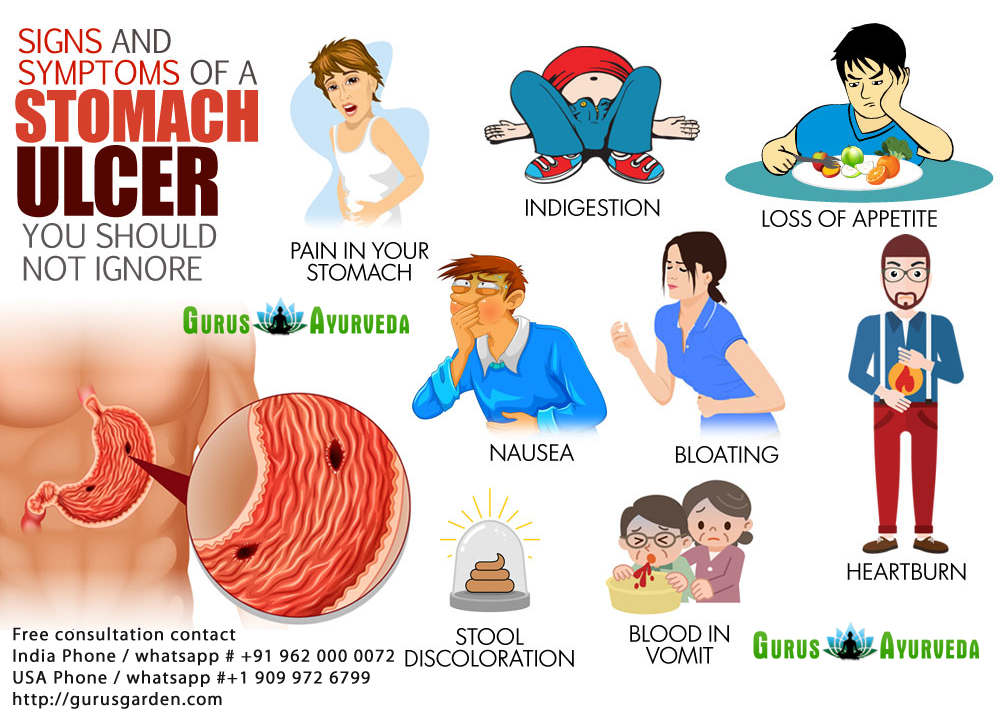 Such measures include:
Such measures include:
- improvement of housing and living conditions of the population;
- optimization of working conditions, prevention of occupational lung diseases;
- improvement of the environment, including the fight against pollution of atmospheric air, water bodies, soil, gardening, compliance with sanitary requirements for industrial hygiene;
- improving the quality of nutrition;
- fight against alcoholism, drug addiction, substance abuse, smoking;
- development of physical culture and sports, cultivation of a healthy lifestyle;
- expansion of the network of children’s health and sanatorium institutions;
- carrying out social and sanitary and veterinary activities in places of industrial production of animals and birds.
Specific prophylaxis of tuberculosis
The main goal of specific prevention of tuberculosis (vaccination against tuberculosis) is the development of specific individual and collective immunity in children and adults up to the age of 30.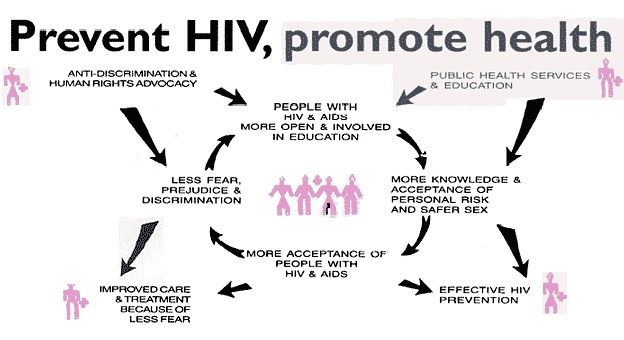 This is achieved with the BCG vaccine, the original live but weakened strain of MBT. The biological activity (immunogenicity) of the BCG vaccine is associated with the ability to take root in the body of the vaccinated, multiply at the site of vaccination and give a specific response, accompanied by an allergic restructuring of the body, which makes it possible to use it for the prevention of tuberculosis.
This is achieved with the BCG vaccine, the original live but weakened strain of MBT. The biological activity (immunogenicity) of the BCG vaccine is associated with the ability to take root in the body of the vaccinated, multiply at the site of vaccination and give a specific response, accompanied by an allergic restructuring of the body, which makes it possible to use it for the prevention of tuberculosis.
Newborns are vaccinated on the 4-7th day of life. A few years later, in order to prevent tuberculosis, revaccination is carried out. In Russia, it is carried out for clinically healthy children 7 years old (students of the 1st grade), 12 years old (5th grade), adolescents 16-17 years old (10th grade), and then every 5-7 years until the age of 30 age in the presence of appropriate indications (contact with a patient with tuberculosis or the absence of infection according to the results of a tuberculin test).
Prevention of tuberculosis involves the selection of candidates for revaccination using the Mantoux test. Revaccinate only those individuals whose Mantoux test turned out to be negative. Revaccination is contraindicated: persons infected with tuberculosis of any age, who have been ill, tuberculosis in the past, patients with all acute infectious diseases, skin, allergic diseases, including rheumatism, exudative diathesis, and epilepsy.
Revaccinate only those individuals whose Mantoux test turned out to be negative. Revaccination is contraindicated: persons infected with tuberculosis of any age, who have been ill, tuberculosis in the past, patients with all acute infectious diseases, skin, allergic diseases, including rheumatism, exudative diathesis, and epilepsy.
An analysis of a number of studies evaluating the effectiveness of vaccinations against tuberculosis shows that BCG vaccination reduces the risk of developing the disease by 50%. Prevention of tuberculosis by vaccination is most effective in high-risk settings such as those found in tropical countries. The higher the vaccination coverage, the lower the incidence of tuberculosis. Prevention of tuberculosis through vaccination leads to a decrease in the infection rate, a sharp decrease in the incidence of tuberculous meningitis and mortality.
Chemoprophylaxis
Chemoprophylaxis and mass fluorographic and allergological examinations play a special role in the prevention of tuberculosis.
Chemoprophylaxis is an effective way to prevent tuberculosis in people at increased risk of developing infection. Prevention of tuberculosis by chemoprophylaxis can be primary when carried out in healthy individuals who are not infected with MBT, but who are in contact with patients with tuberculosis, and secondary – in people infected with MBT or who have been ill in the past.
Prevention of tuberculosis through primary chemoprophylaxis reduces not only the incidence, but also infection, suppressing tuberculosis infection in the incubation period, secondary – prevents exogenous superinfection and activation of endogenous tuberculosis infection.
Chemoprophylaxis is required:
- all healthy persons (children, adolescents, adults) who are in family, household and professional contact with bacterial excretions;
- children and adolescents with a tuberculin test turn; 9the tuberculin reaction turned into a hyperergic one;
- persons with post-tuberculous changes in the lungs receiving steroid hormones for another disease;
- patients with silicosis, diabetes mellitus, mental illness, drug addiction, alcoholism, gastric ulcer of the duodenum, chronic inflammatory diseases of the respiratory system in the presence of post-tuberculosis changes in the lungs, HIV-infected;
- adults with post-tuberculous changes in the lungs and in the presence of hyperergic reactions.

For all specified categories of persons prevention of tuberculosis through chemoprophylaxis is carried out in the spring-autumn period (March-April and September-October) or at other times of the year, depending on the “seasonality” of the manifestations of the infection and its relapses. A necessary condition is the control over its implementation by a medical worker, when the drugs are handed out to patients for taking at home.
Fluoroscopy
Large-scale fluorographic examinations of the adult population are highly effective for the prevention of tuberculosis. The annual examination helps to identify people with tuberculosis in a timely manner. Fluorography in the system of tuberculosis prevention makes it possible to start treatment at the early stages of the disease, which is an important condition for its success. Depending on the specific conditions, the material and technical equipment of health authorities in different countries, either a complete or a selective survey of the population is carried out in order to prevent tuberculosis. In a random survey, groups of people with a high risk of infection and development of secondary tuberculosis should be under observation.
In a random survey, groups of people with a high risk of infection and development of secondary tuberculosis should be under observation.
Anti-epidemic measures to improve tuberculosis foci
Anti-epidemic measures to improve tuberculosis foci are of great importance for the prevention of tuberculosis. These activities are carried out by influencing all three links of the epidemic process: the source of infection, the route of transmission, and persons susceptible to tuberculosis.
There are three groups of foci of tuberculosis infection:
- Foci with a high degree of epidemiological danger (burdened foci), where patients with massive bacterial excretion of nivm or meager MBT excretors live, but in the presence of children, adolescents and pregnant women in the focus.
- Epidemiologically less dangerous foci in which patients with poor MBT excretion live, there are no children, adolescents and pregnant women; this also includes foci of “conditional” bacterial excretion even in the presence of children and adolescents in their environment.

- “Prosperous” foci of tuberculosis infection, formed by “conditional” bacterial excretors in the absence of children, adolescents, and other aggravating factors. The same group includes private farms in rural areas, in which livestock with tuberculosis has been identified.
Prevention of tuberculosis in the centers of tuberculosis includes:
- hospitalization of patients with tuberculosis and especially obvious MBT excretors immediately after diagnosis;
- carrying out the final, and subsequently – the current disinfection;
- systematic, long-term examination of persons in contact with patients;
- vaccination, revaccination and isolation of contact persons for the period of development of immunity;
- chemoprophylaxis for contact persons;
- training in sanitary and hygienic skills of the patient and surrounding persons;
- improvement of living conditions of the patient’s family.
Tuberculosis prevention at work
Along with anti-epidemic and preventive measures in foci at the place of residence of patients, tuberculosis prevention is essential in the fight against tuberculosis under production conditions. According to the sanitary rules, tuberculosis patients who have MBT excretion are not allowed to work in some industries and in a number of institutions.
According to the sanitary rules, tuberculosis patients who have MBT excretion are not allowed to work in some industries and in a number of institutions.
The list of professions subject to prohibitive measures can be divided into three categories:
The first category is employees of preschool, school and health resort children’s institutions.
The second category is catering and food industry workers who are in direct contact with raw materials, semi-finished products and finished products, as well as repair, clean and disinfect production equipment. This group also includes employees of pharmacies, pharmaceutical factories engaged in the manufacture and packaging of medicines, workers of water supply facilities, plumbers, workers of enterprises that manufacture children’s toys.
The third category is public service workers, who also need ongoing tuberculosis prevention : bathhouse attendants, hairdressers, beauticians, persons providing washing and issuing linen in laundries, conductors and conductors of public transport, stewardesses and taxi drivers, sports workers buildings, libraries.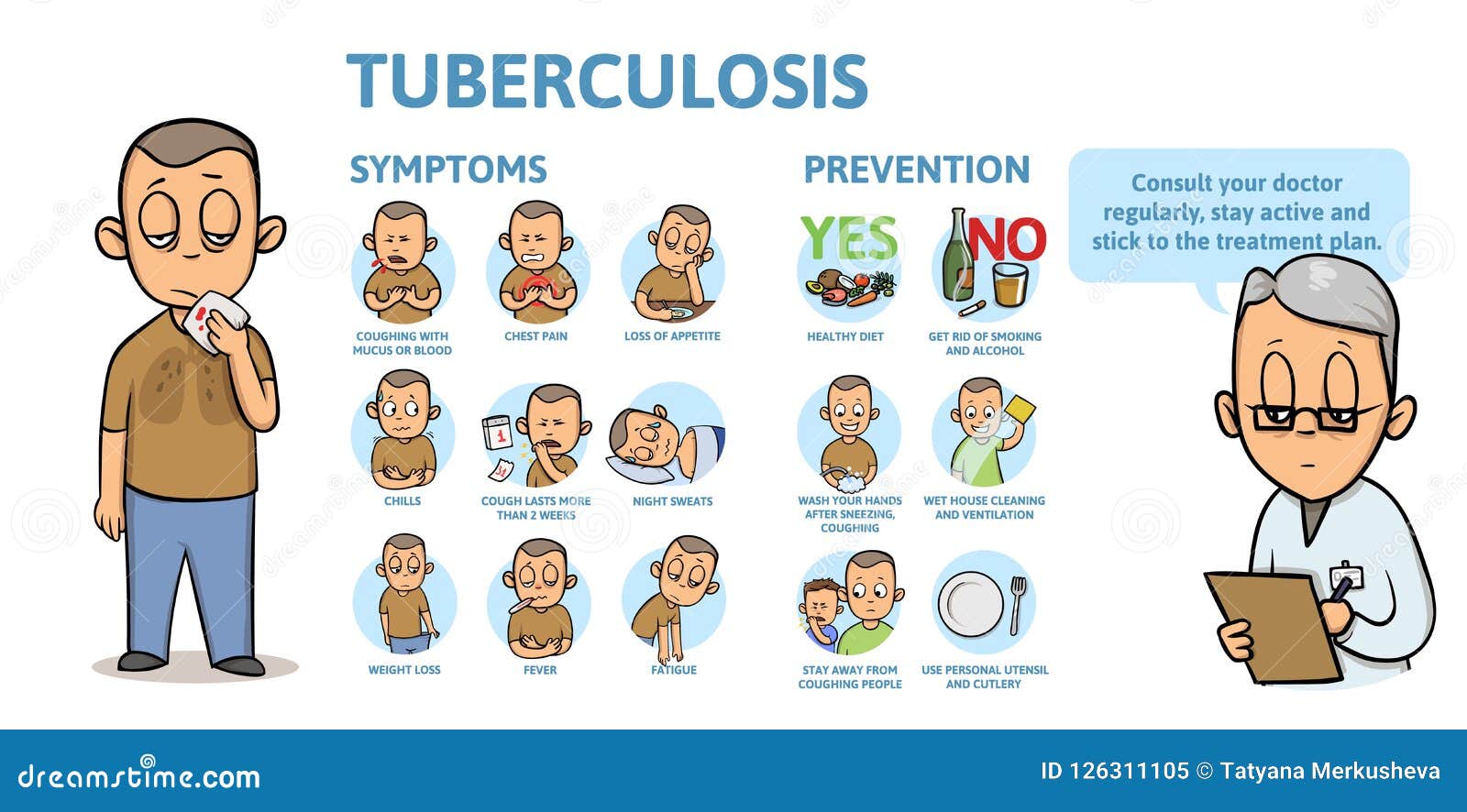
Enterprises and institutions where TB patients who do not belong to the above categories work, and have their own medical unit, also carry out tuberculosis prevention: registration of patients, controlled treatment at the outpatient stage, monitoring the health of patients, recording and examining industrial contacts, rational employment, etc.
Prevention of tuberculosis – Official website of the Tazovsky District
Version for the visually impaired
Hide
one of the most dangerous infectious diseases, every second in the world one person is infected with tuberculosis, every four seconds one falls ill and every 10 seconds one person dies from tuberculosis. Approximately 8.4 million cases of tuberculosis are registered annually and approximately 2 million people die from this disease. The fight against it has been going on for 150 years, but the worldwide epidemic has not been defeated.
Tuberculosis is an infectious disease caused by Mycobacterium tuberculosis and characterized by the formation of one or many foci of inflammation in various organs, but most often in the lung tissue.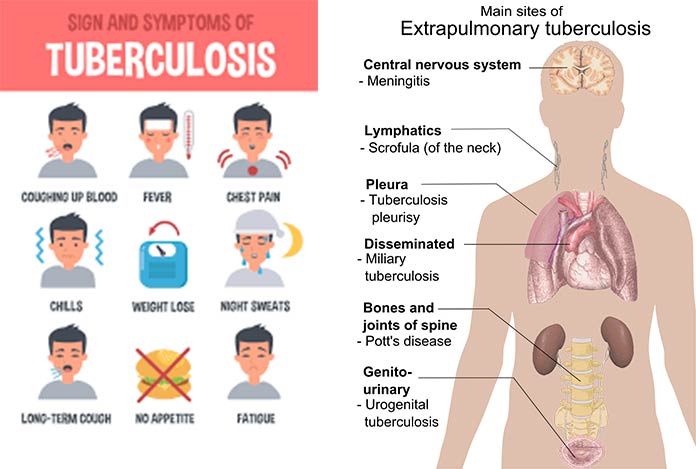
The sanitary and epidemiological situation in terms of the incidence of tuberculosis in the Russian Federation as a whole and in the Yamalo-Nenets Autonomous Okrug remains consistently unfavorable. For 2018 in the municipality of Novy Urengoy, 9 cases of tuberculosis were registered, of which 3 cases of tuberculosis among the unemployed, 3 among workers, and 3 cases among pensioners.
When a modern person encounters this name of a disease, most of them have an image of a pale, emaciated, constantly coughing person. Most people sincerely believe that tuberculosis is contracted only in places that are not so remote, and if you are not serving a prison term, you are not a vagabond, then the disease does not threaten you. In reality, almost anyone, with the exception of hermits who do not leave their homes, is at risk of infection, and hence the possibility of getting TB.
The main source of infection is a sick person. Tuberculosis is most often spread by airborne droplets. When coughing, sneezing, talking, a tuberculosis patient in the air, on the floor and walls of the room, household items get the smallest droplets of sputum and saliva. Microbes after drying sputum remain viable for a long time, they survive six to eight months. This leads to the possibility of contact-household transmission of the disease.
When coughing, sneezing, talking, a tuberculosis patient in the air, on the floor and walls of the room, household items get the smallest droplets of sputum and saliva. Microbes after drying sputum remain viable for a long time, they survive six to eight months. This leads to the possibility of contact-household transmission of the disease.
Tuberculosis affects not only people, but also animals. Therefore, infection is possible when drinking unboiled milk, eggs, poorly cooked meat of a sick animal. Tuberculosis affects people of all ages and genders. Koch’s wand does not distinguish between social status, and infects the poor and the rich with equal efficiency.
In most cases, when tuberculosis bacilli enter the body, the human immune system destroys the pathogenic bacteria that have entered and does not lead to the disease in the active stage. But some mycobacteria can survive and remain inactive for a long time. Months and even years later, when the immune system is weakened, as a result of some other illness, malnutrition or stress, TB bacteria begin to multiply, initiating the development of active TB.
An effective way to prevent tuberculosis is vaccination of newborns, which is carried out on the 3rd-5th day of life. Remember! Refusing to vaccinate your child against tuberculosis means, in fact, denying the right to become protected from this infection. Do not deprive your child of the right to be healthy!
The main measures that can prevent the spread of tuberculosis are the organization of early detection of patients, which is carried out during the annual tuberculin diagnostics in children and fluorographic examination among the adult population. Avoidance of adults from testing for tuberculosis leads to the identification of severe, advanced forms of the disease, which are difficult to treat and often end in disability and death. The adult non-working population should undergo a fluorographic examination at least once every 2 years. Tuberculosis detected in a timely manner responds well to treatment and is completely cured with continuous and complex treatment.
Prevention of tuberculosis among the entire population is based on measures aimed at increasing the body’s defenses: rational and timely nutrition, smoking cessation and alcohol abuse, adherence to the correct work regime, hardening, adherence to a healthy lifestyle, as well as measures that improve the environment person.

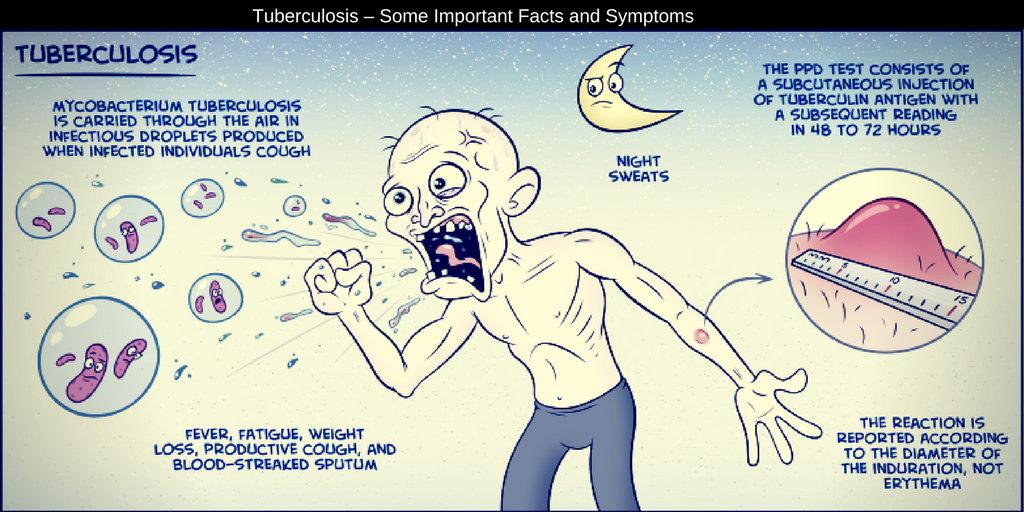

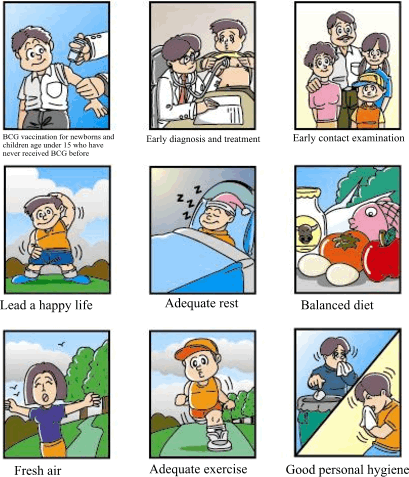 You may have to take them for much longer, up to 30 months, and they can cause more side effects.
You may have to take them for much longer, up to 30 months, and they can cause more side effects.
 The germs multiply and make you sick. You can spread the disease to others. Ninety percent of active cases in adults come from a latent TB infection.
The germs multiply and make you sick. You can spread the disease to others. Ninety percent of active cases in adults come from a latent TB infection.
 The results can also be false negative, saying that you don’t have TB when you really do, if you have a very new infection. You might get this test more than once.
The results can also be false negative, saying that you don’t have TB when you really do, if you have a very new infection. You might get this test more than once.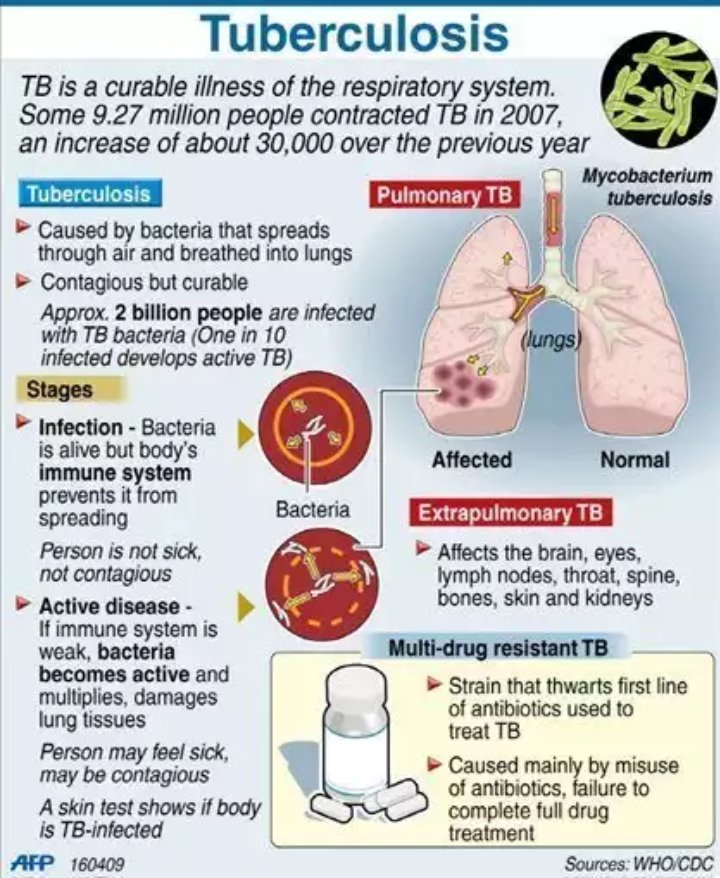 If you see any signs of active TB, call your doctor right away.
If you see any signs of active TB, call your doctor right away.
 pdf
pdf
/copd-causes-57-5aeca0f4a9d4f90037e4ce96.png)